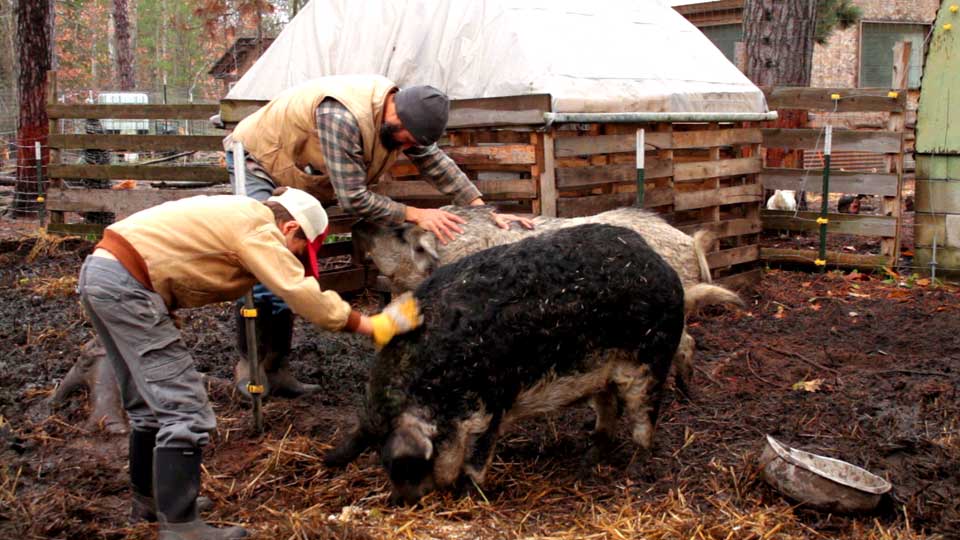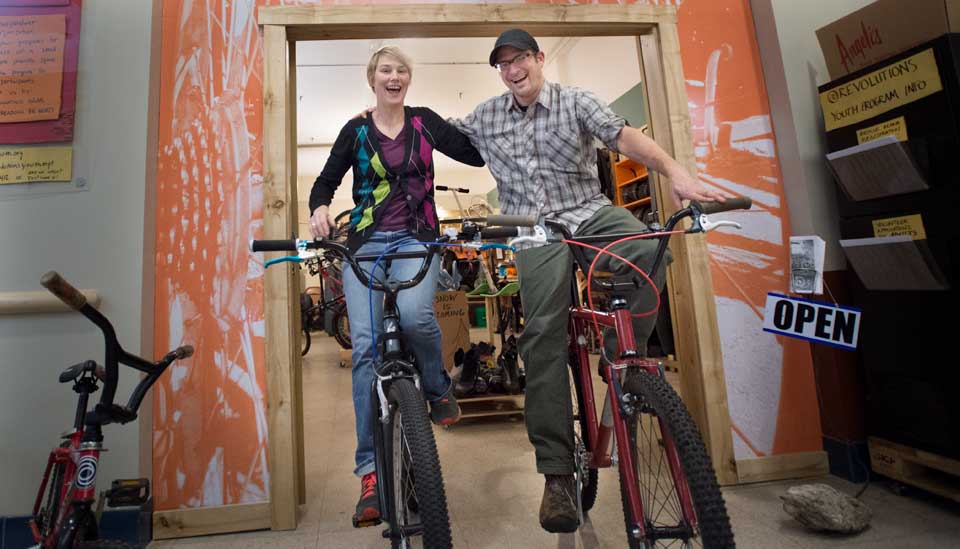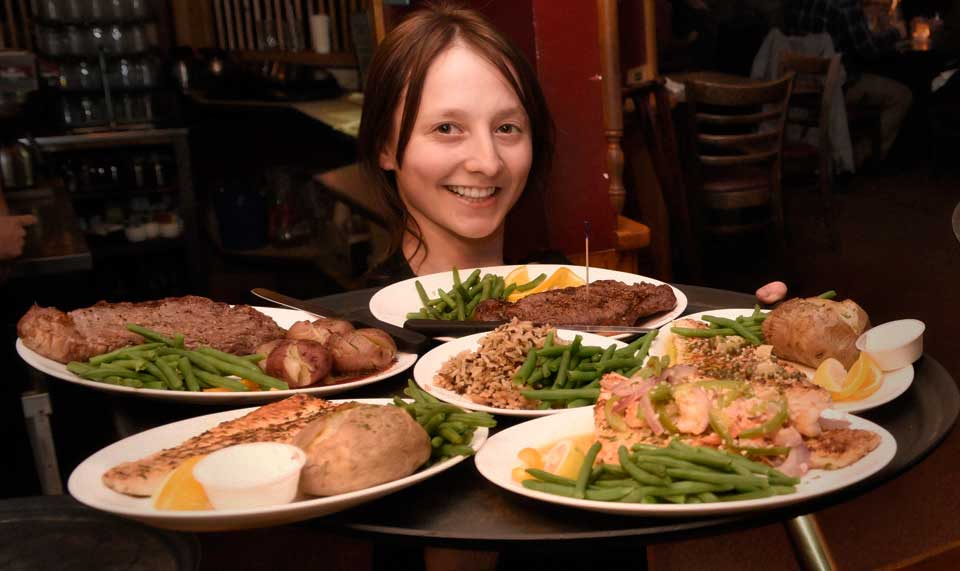The Vagabond Kitchen: Last Week of Moving Meals
Foraging Forest and Freezer
We were cleaning out the refrigerator and freezer in preparation to move. The last Rock River Farms chicken rested in the freezer’s meat drawer. I stared at it anxiously. Should I cook the last chicken before moving, or save it for a summer meal? Cold freezer air undulated around my feet as I surveyed the chicken. It had no answers.
Oh, to hell with it, I thought, hoisting the frozen, plastic wrapped bird into the sink. I’d gotten better at pinching pennies for our food budget and with our move into the tent rapidly approaching, the multiple meals available in a whole chicken won the day.

Gus checking out the home-tent in the rental house back yard. First set-up.
I’ve read countless cookbooks, food blogs, and recipes and the trend is toward chicken breasts because they’re simple to cook and versatile. Also, they’re usually cheap. These little saran-wrapped Styrofoam planked packages need to be reevaluated as a part of our daily or even weekly meals. Aside from health concerns inherent in commercial chickens raised full of antibiotics and hormones, think about the bigger picture: Eating just the chicken breasts is a waste of meat. A whole bird will not only feed multiple people for, potentially, several meals, but it will also provide broth for more meals. Organic/local chicken is also usually cheaper when purchased by the pound.
The last chicken in the freezer fed us for multiple meals and then I boiled down the bones, etc. and made a chicken broth so rich and fortifying you could feel it in your blood.
Orson, my dear friend and fellow English instructor Dan, and I ate the chicken outside, despite the mid-May chill. It was our first meal in the tent.
I looked at the faces of my loved ones. Smile dimples dented my cheeks as I watched them laugh so hard their eyes closed. This was the start. The first meal, first laughter in the tent. First of many to come. Welcome to the Vagabond Kitchen
Baked Rock River Farms Chicken:
Rub the chicken liberally with a mixture of olive oil, butter, salt and pepper—make sure the pan is coated in butter/oil too.
Stuff the chicken with thick slices of garlic, onion wedges, fresh thyme (any fresh herbs are delicious) and lemon wedges.
Make sure the pan is small enough so that the juices collect around the chicken, rather than flowing out into the pan and burning.
Roast in a 350 degree oven (I often up the temp. to 375 the last half hour for crisper skin. If the skin is getting too crispy, toss a length of tinfoil over the bird) until skin is crispy and juices run clear. The timing varies by poundage, but it usually takes about an hour and a half.
Cooking times can vary—make sure you leave yourself extra time in case the bird takes a bit longer. Chicken’s cooking temperature should be at least 165 degrees for safe eating.
Let it rest for at least ten minutes before cutting and serving.
You can make delicious gravy out of the pan juices by heating them and stirring in butter and flour.
Whole Roasted then Smashed Potatoes with Balsamic-Mustard Dressing, Topped with Leek Pesto

Wild Leeks!
Wash the potatoes and mix with olive oil, butter, dried herbs (thyme especially, to complement the chicken, but sage, parsley, rosemary, tarragon, savory, etc. would also be delicious), and salt and pepper. Random herb/spice mixtures are also good for these potatoes.
Bake potatoes in (preferably a cast iron) an oven-safe pan on 375—could go into the oven with the chicken—until a knife slips through easily.
Whisk together balsamic vinegar, Dijon mustard, minced garlic, salt and pepper.
When the potatoes are soft, remove from oven and smash hot potatoes with the back of a spoon or fork. Top with several pats of butter and drizzle on balsamic dressing. Bake for another ten minutes.
I got quite fancy at this point and went on to add a bit of homemade leek pesto from leeks I’d foraged the day before.
Pestos are simple and can be made with any combination of basil, parsley, arugula, leeks, cilantro, etc. I used the whole leek, putting leeks, olive oil, garlic, salt, pepper, toasted/salted sunflower seeds, and parmesan cheese into the food processor and blending until I had the desire consistency–smooth.
Brussel Sprouts with Bacon

Bluestem Farms Bacon
Frozen vegetables, especially in May in Upper Michigan, are an excellent option. Frozen vegetables (I always advocate local and organic) usually have more nutrients than fresh vegetables because they’re picked and then flash-frozen, which allows them to maintain their nutrients. “Fresh” vegetables are picked, usually in California or further, and then trucked hundreds or thousands of miles to the store. Every minute on the truck the produce loses nutritional value.
Steam Brussel sprouts until thawed, then transfer to a hot pan with olive oil. Sauté until lightly browned. Mix in chopped bacon and garlic.
How Many Meals can You Make from One Chicken?—Homemade Chicken Broth Soup with Shiitakes, Leeks, and Noodles
This was one of the best chicken soups I’ve ever made. Orson’s dad and step-mom gave us some shiitakes that they’d grown and the flavor/texture of the mushrooms perfectly complimented the leeks and chicken.
For the broth, I take whatever odds and ends I have laying around (leeks, onions, garlic, celery, carrot, etc.) and the chicken carcass/leftovers, cover it with water and let simmer for 3-6 hours. I strain off the chunks, making sure to save any bits of chicken that may have come loose, and voila! Homemade chicken broth ready for soups, risottos, or the freezer.
I sautéed the leeks, greens and bulbs, and shiitakes with butter and olive oil, then added the leftover chicken bits. Because the flavors seemed to lend themselves to Asian cuisine, I also added soy sauce and a dash of Braggs Liquid Aminos to the mix. Spicy would be good too, with chili garlic paste or red pepper flakes. Add the broth and simmer for about a half an hour. I then added cooked spiral noodles. Make sure to add noodles/rice at the end so that they don’t cook down into mush.
Eating a soup made from homemade broth confers an expanded awareness of our food. It came from a chicken I helped butcher, fed and satisfied us for several happy meals, and then became the broth building strength in our bones.
Our food has a past—has a history. A story we should know.















You must be logged in to post a comment Login